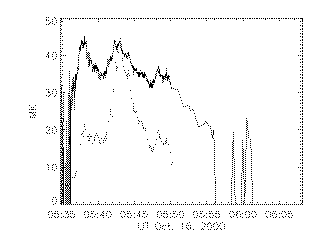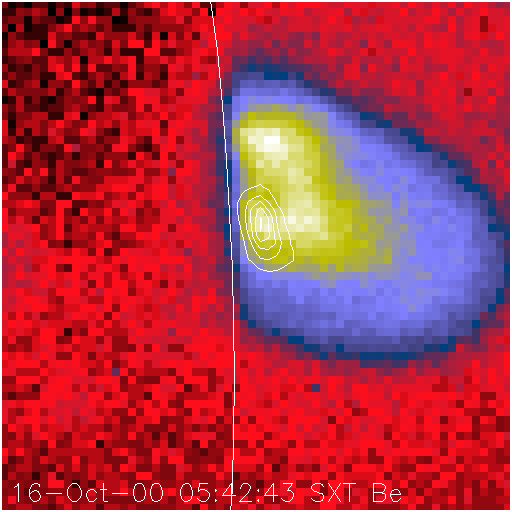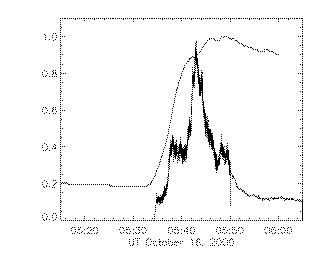
|

|
By "superhot source" we mean a coronal soft X-ray source with an apparent temperature exceeding 30 MK or so. Lower temperatures commonly occur in flare plasmas, but sometimes we see higher temperatures (as originally found in a celebrated balloon flight). Right now there is no concensus about what this may mean. The coronal temperature achieved by a flare results from a balancing act between energy input and conductive cooling, we think; this regulation has a hard high-temperature limit because the thermal conductivity increases so rapidly with temperature. But is "conductivity" a meaningful concept in plasmas this active? Not knowing the answer to this question impels us to study such events!
Often we do a science nugget on a single particular event that is interesting. That's what is happening here too, except that next week we plan to do a second nugget on this very same event's second phase. As Bridget Jones might have said, it is "v. interesting." We found this event in a search for extreme over-the-limb events that might have non-thermal properties related to the celebrated moving hard X-ray source of April 18, 2001. The parent flare occurred about 15 degrees behind the west limb, corresponding to an occultation height in the corona of about 20,000 km.
The event
The time-series plot shown below (left) is what interests us, because it shows rapid temperature variations and a spiky hard X-ray time profile, both unusual in a high-altitude source:

|

|
The plot shows the plasma temperature derived from the HXT M1/L ratio, which reflects electron energies of 15-20 keV (solid line) in comparison with the flux (dashed line). The high temperature makes it "superhot", and HXT is seeing electrons well up in the tail of the Maxwellian distribution (4-5 kT). The hard X-ray overlay in the image at the right shows that these electrons seem to be in one leg of an expanding soft X-ray structure. But much more likely, the superhot source is in an independent set of loops that are just poking their head above the limb. The standard "Neupert plot" shows that this superhot component occurs during the impulsive phase of the flare:

This plot shows the hard X-ray light curve (23-33 keV) overlaid on the GOES soft X-ray light curve (nominally 1.5-6 keV), each normalized to its maximum. The superhot source occurs during the rise phase of the soft X-rays.
No meter waves, no CME, no coronal fuss
This event was eruptive in a certain sense, since our soft X-ray movie shows it to be. But the motion was arrested and did not lead, as usual, to decimetric or metric radio emission, nor to a coronal mass ejection. We keep our eyes open for limited eruptions and in the past have found even X-class flares without eruptions (this one was just C7, but this is a lower limit because of the occultation).
The conclusion here? We've found a non-CME eruptive event with a decidedly anomalous impulsive phase. This nugget does not carry out an analysis of the hard X-ray fluctuations but, as we pointed out, they are most unsual in a soft-spectrum "thermal" source. We would immediately claim that the lack of a CME or (say) a Type IV burst resulted from this insipid quasi-thermal energy release, except that our earlier example had all of the non-thermal bells and whistles. So we just don't know yet. However please tune in next week for the rest of the story.